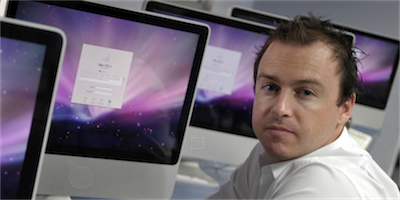Name: Adrian Camm (@adriancamm | http://adriancamm.com/)
Organization: Quantum Victoria
Current title: Curriculum Innovation
Selected accolades: 2009 Australian Awards for Teaching Excellence – Best National Achievement: The Ministers Award for Excellence in ICT, 2010 Victorian Education Excellence Awards – Most Outstanding Secondary Teacher of the Year
What skill(s) do you feel are most important for today’s students to explore in academic settings (tech or non-tech related)?
Learning how to learn is the most important skill students need in the 21st century. But if you are looking at ‘hard’ skills then the STEM (Science, Technology, Engineering & Mathematics) disciplines, including computer science, will be needed by most as we move increasingly toward a multi-disciplinary, high-tech future.
Students with STEM skills, combined with innovation and entrepreneurship, will be equipped to find solutions to current and future problems such as clean and renewable energy, climate change, poverty, health etc. and this will ultimately lead to a better world.
What is the best part of your job?
Working with students – I don’t think there is a better feeling than the one you get when a student approaches you after they have graduated to reminisce about something you shared together.
The teacher-student bond is such a powerful one that really can affect the lives of students.
For a teacher looking to use technology to connect with students, enhance learning or embrace 21st century skills, where do you suggest one begin?
First and foremost, it is about relinquishing control – moving away from the mindset that the teacher is the smartest person in the room and tapping into the expertise and interests that students have. Establish a culture of learning within your classroom with teachers teaching students, students teaching teachers and students teaching each other. Once this culture is established there is an abundance of resources on the web that will allow you to learn whatever you want, from whoever you want, whenever you want.
Do you have a technology-in-the-classroom disaster that you are willing to share? What did you learn from the experience?
Something will always happen exactly when you don’t want it to. When it happens it just highlights the importance of being flexible.
I remember that having the ability to see the big picture was what always intrigued me as a student. I think that students who are academically inclined or even academically disaffected want to know how what they are learning fits with their own experiences and with the world around them. The teachers that allowed students to explore and to take discussions in directions that interested them, were the ones that resonated the most with me.
Allowing students to tap into their interests and passions and not saying to students, “Sorry, but you will learn that next year.” or “That won’t be on the exam.” but saying things like, “Wow, that is really interesting. I hadn’t thought of that. Let’s find out together.” That’s what was most powerful for me – seeing teachers in the pursuit of discovery and watching them as they struggled to find an answer or solution to a question – and I think the teachers role is now to do exactly this – to impart their experience and wisdom and to model and promote learning how to learn. Whether we are talking about technology, lesson plans or the curriculum that we have to cover, I think flexibility is the key.
On your blog, you explain that teachers don’t need to be a technology expert before embarking on an integrated project with students. What advice do you have for the classroom that starts a project only to encounter technical issues that slow forward progress? Do you have any tips for keeping students engaged when things get ‘difficult’?
I think if you have the project right, teachers don’t need to do anything to keep students engaged.
Any issues, technical or otherwise, are seen as learning opportunities and one small step along the way to gaining mastery.
If the culture in the classroom is such that everyone is a learner, than these obstacles are where the really deep learning stems from.
